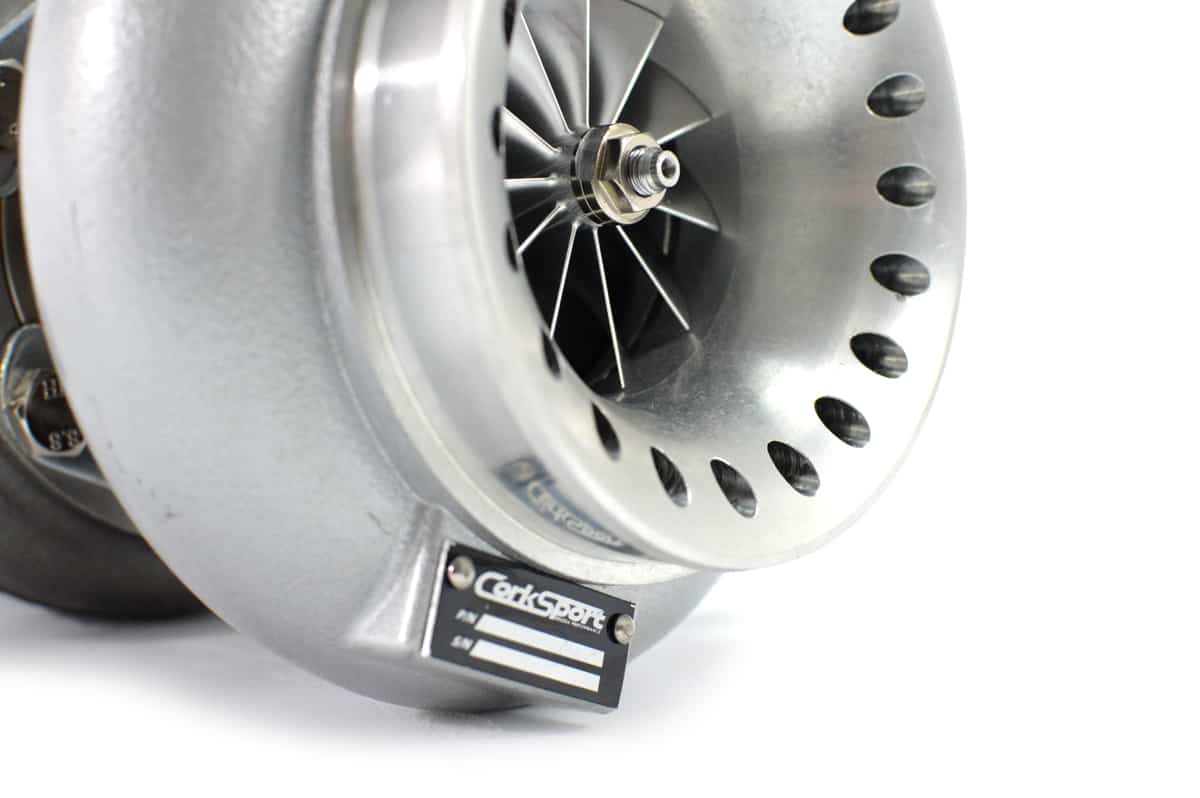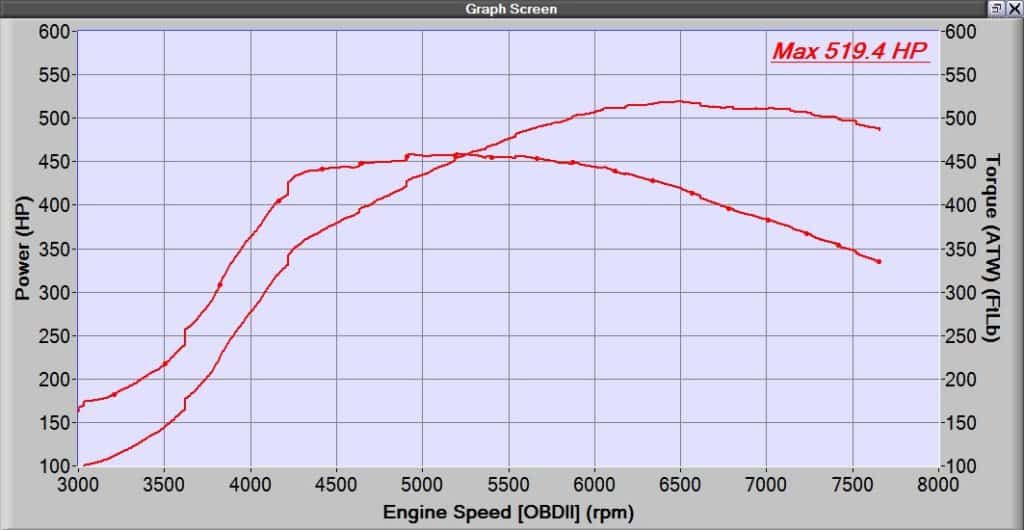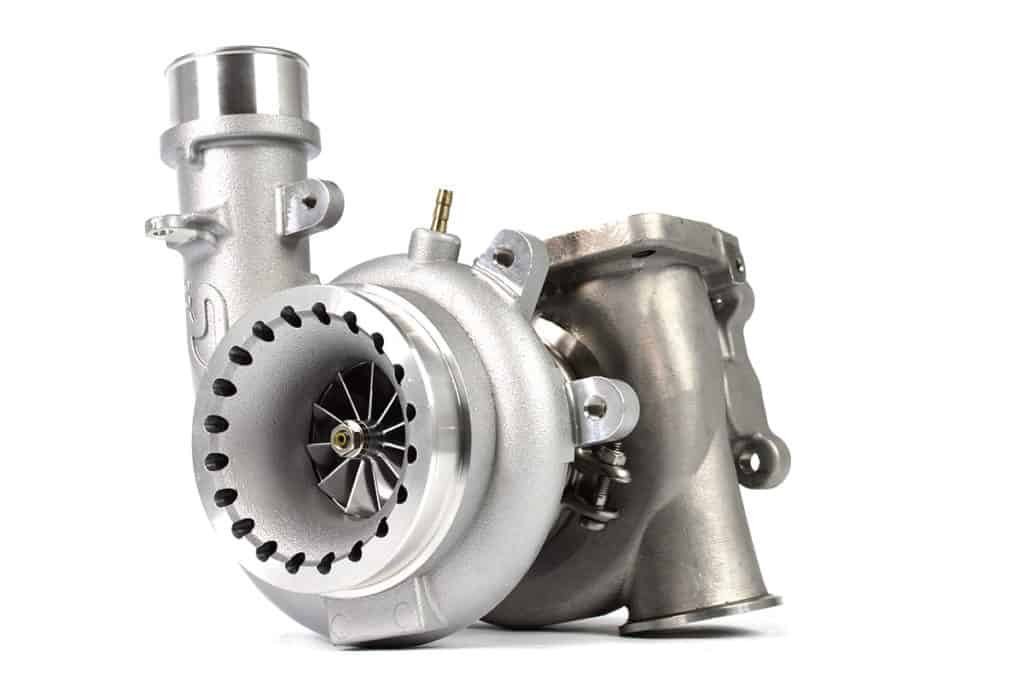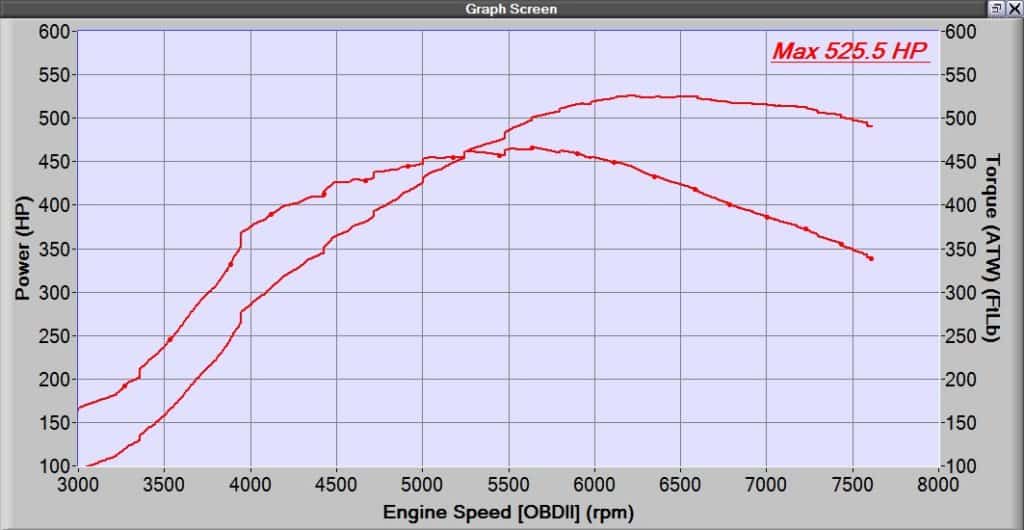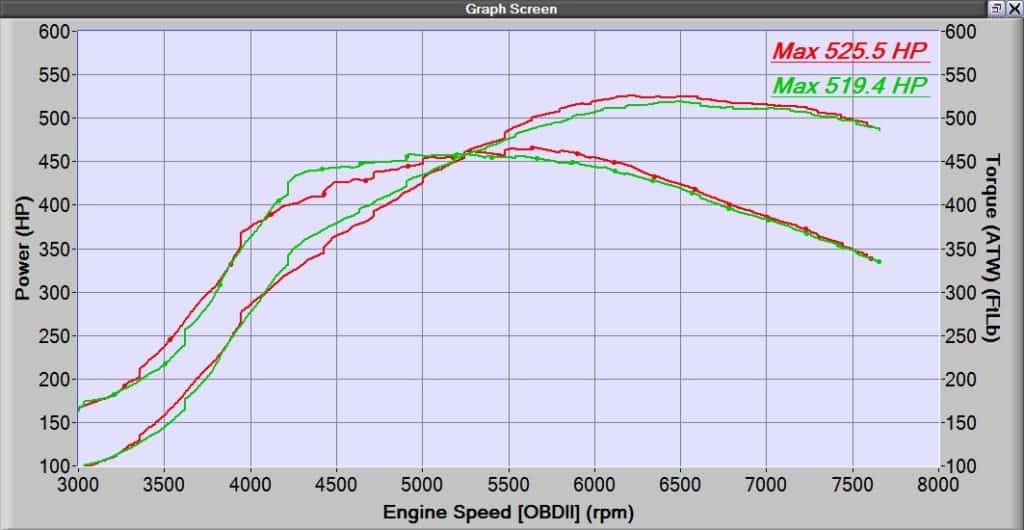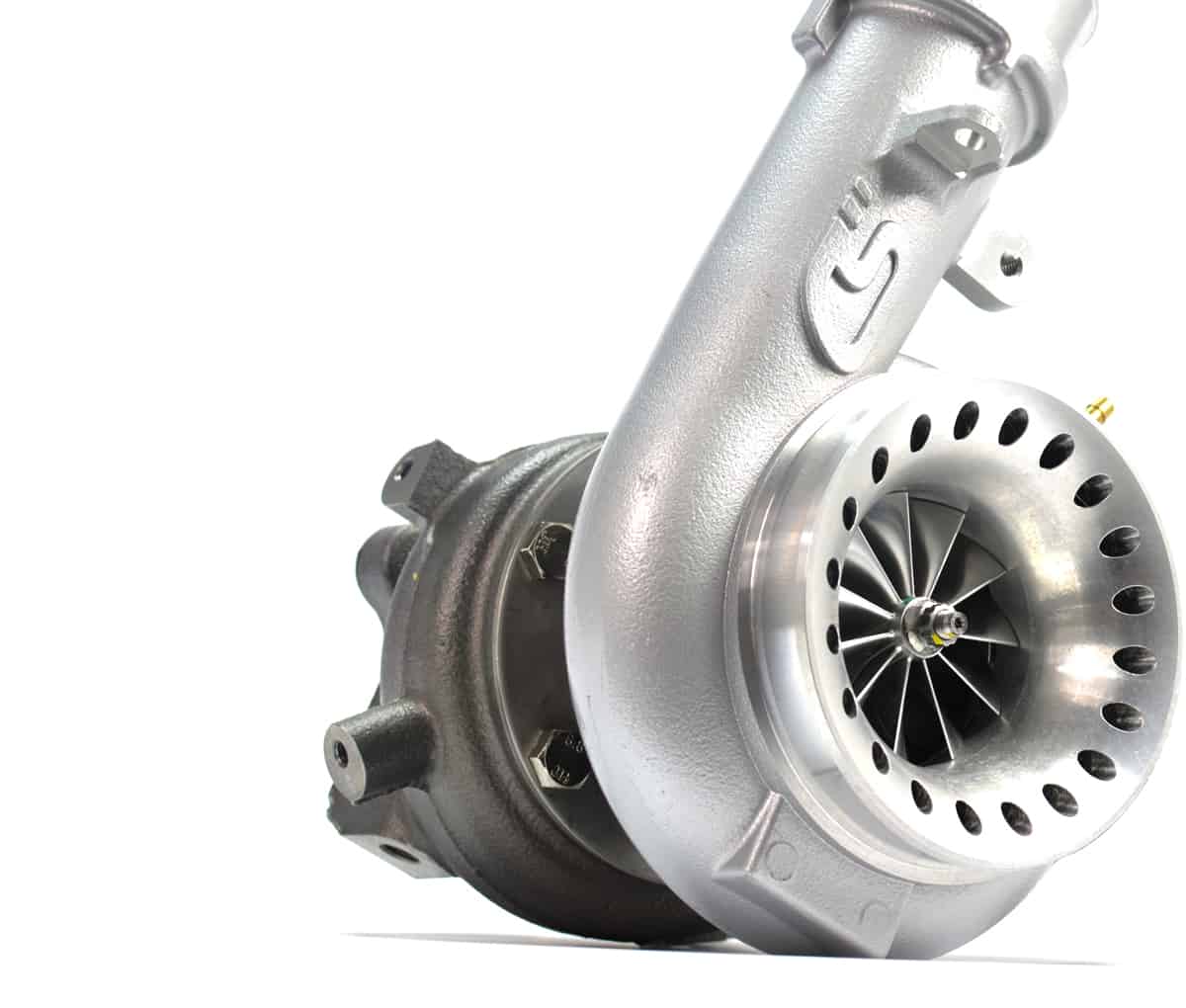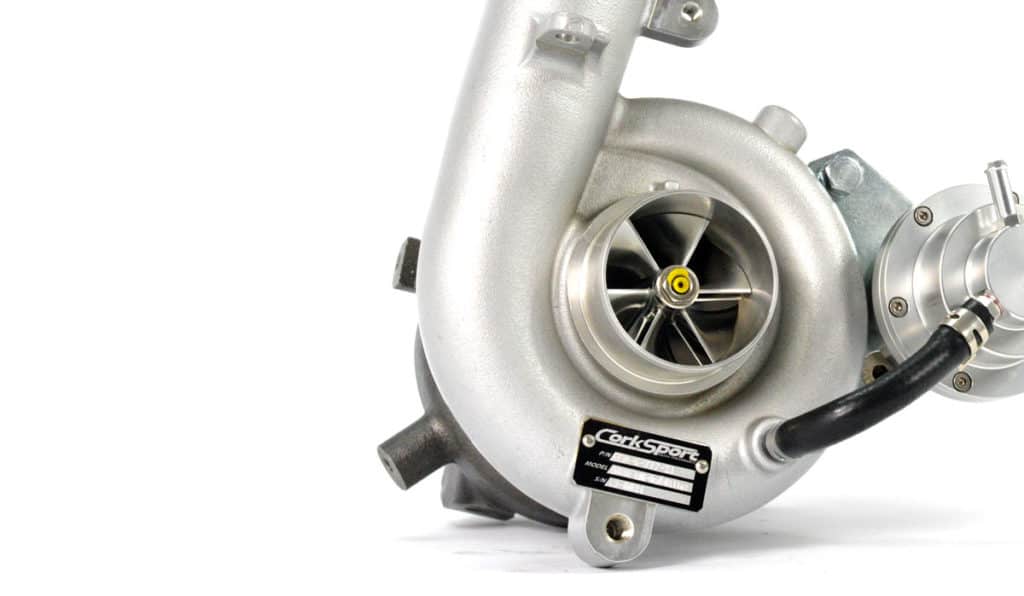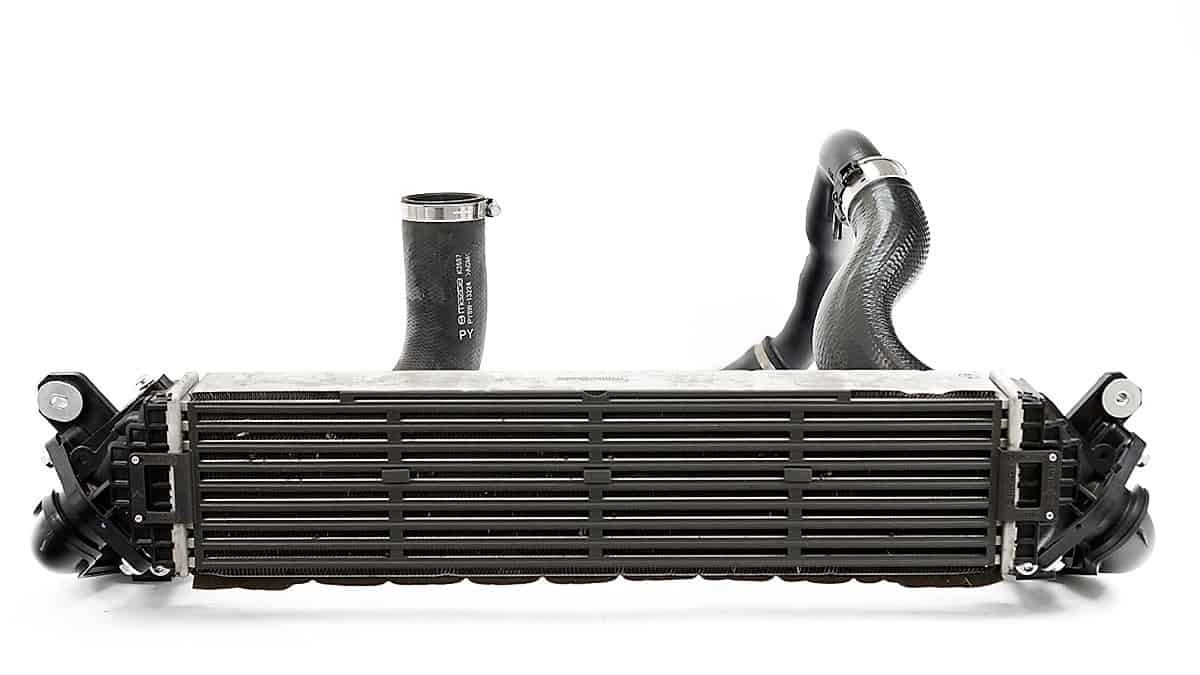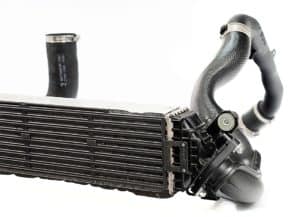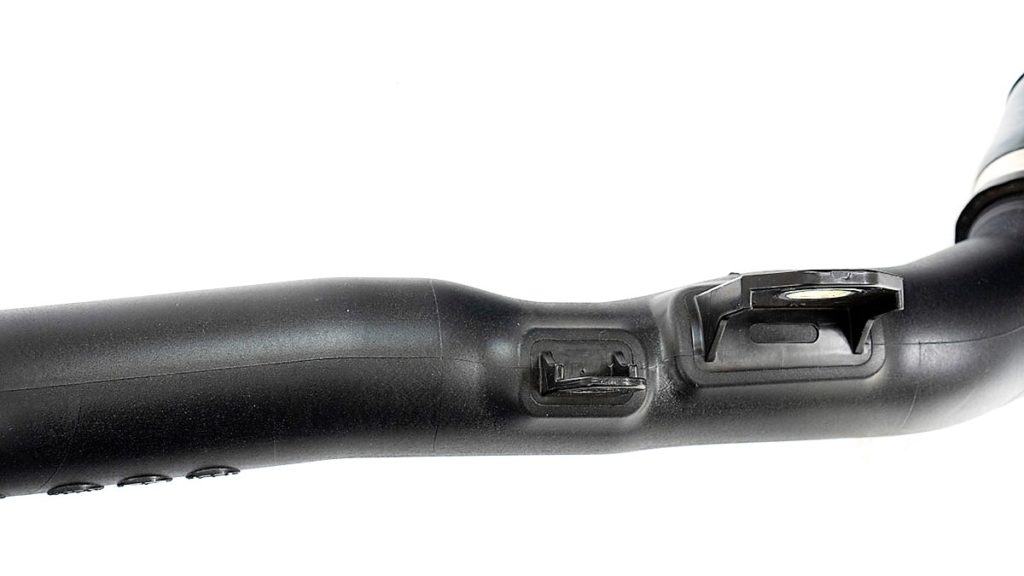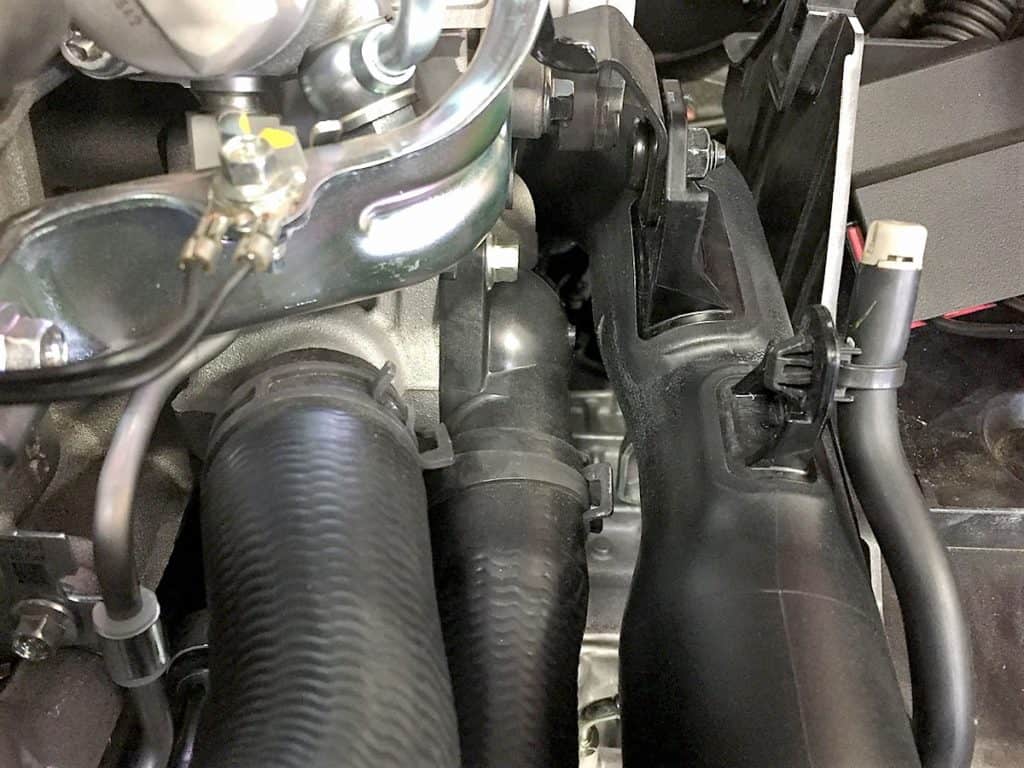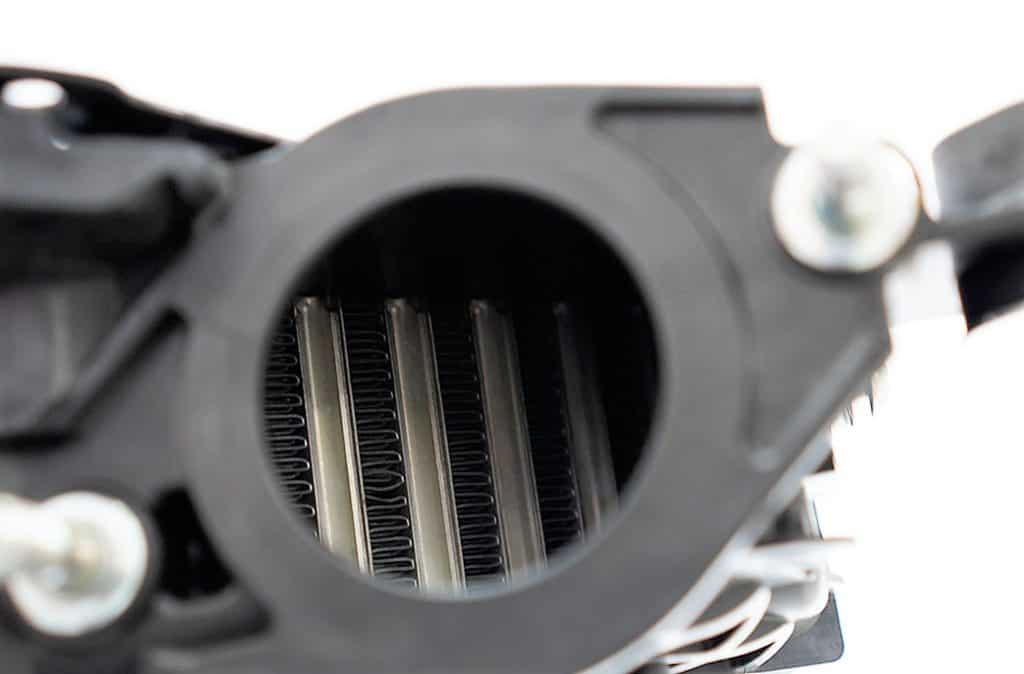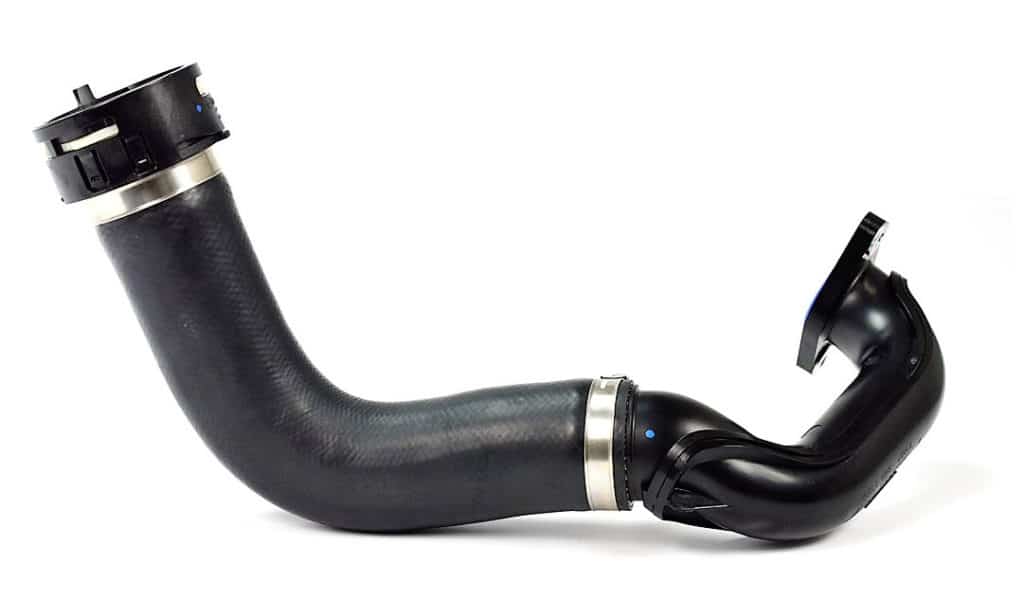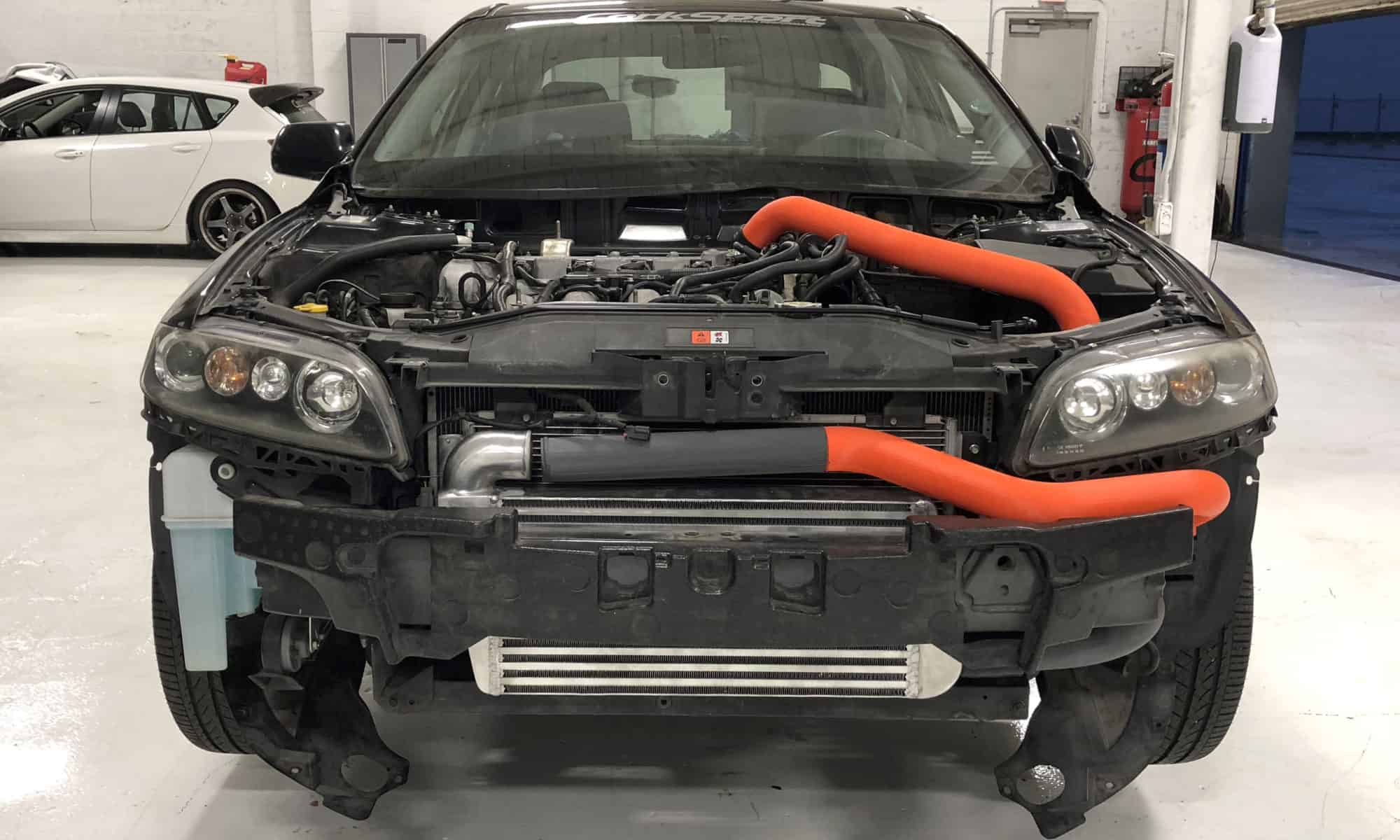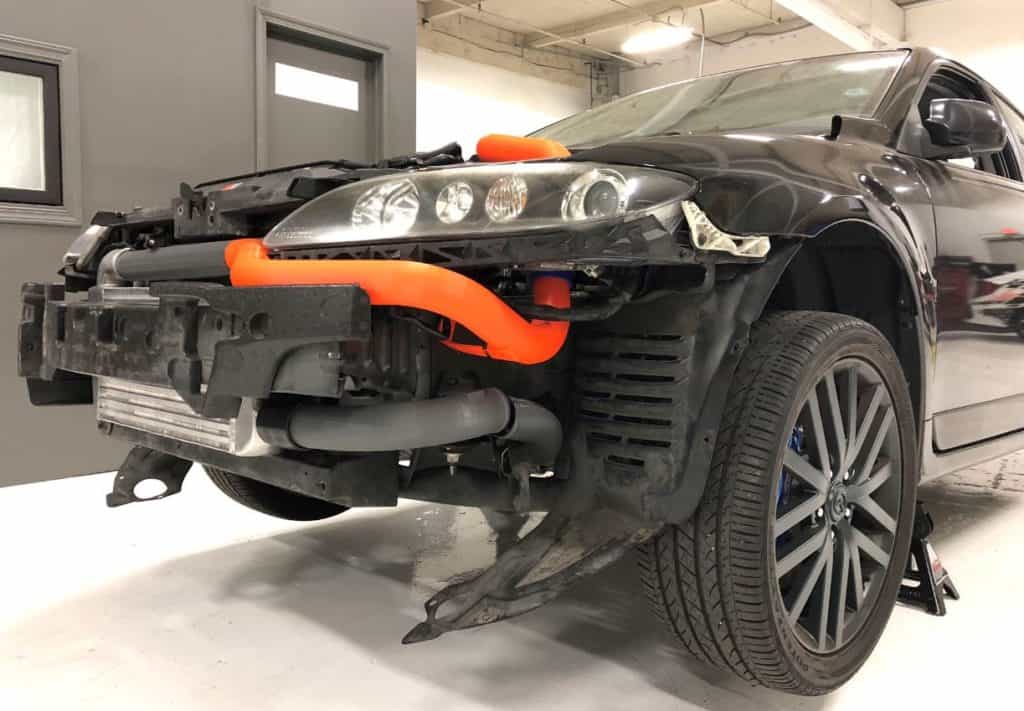The long wait is finally over and you can now get your hands on the CorkSport CST6 Mazdaspeed Turbo, which holds the record for the highest horsepower on the OEM turbine flange at 684WHP! In case this is the first time you’ve heard “CST6”, be sure to check out our blogs on the CS Turbo catalog, CST6 Design, and CST6 Testing. The CST6 is truly a big turbo, so if you’re ready for some serious power on your Mazdaspeed 3 or 6, read on!
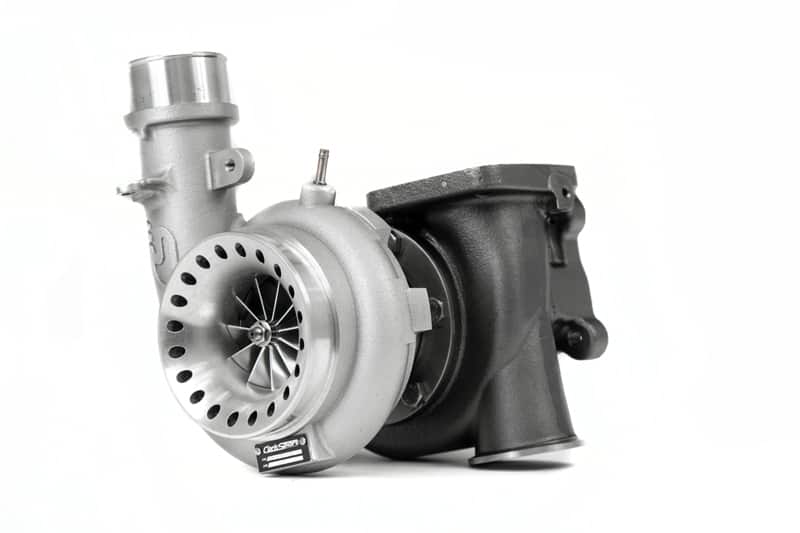
Let’s start by looking at the anatomy of the CST6. The backbone is a tried and true dual ceramic ball-bearing Garrett CHRA. We opted for ball bearings to improve response and durability, especially when running at high boost levels the CST6 is capable of. As for wheels, the turbine is a 10blade GT35 while the compressor is an 11blade GTX76 that is rated for 64 lb/min. This combo provides fantastic spool characteristics for its large size, achieving 20psi by 3800-3900 with the appropriate supporting mods and headwork like on Barett’s GEN1.

The quick spool is not due to the wheels and ball bearings alone though. A lot of research and development went into making the turbine and compressor housings the right fit for the CST6, and balance fast spool with top-end power. A 4” inlet with anti-surge ports provides plenty of air into that compressor wheel while a high swallowing capacity 0.82 A/R external wastegate turbine housing offers superior top-end power capabilities and optimum boost control. Even with all these changes, the CST6 Turbo fits in the OEM location; all you need is the external wastegate actuator and an intake that fits the 4” compressor cover.
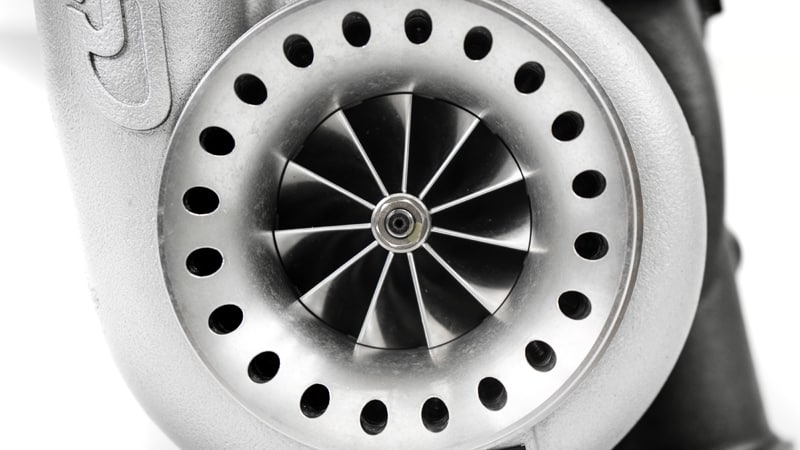
The CST6 is definitely not all bark and no bite though. We have thoroughly tested the CST6 up to its limits and beyond and have had nothing but success. Check out the graph below, that is the CorkSport CST6 in “calm” trim making mid-500s at 28psi. The difference in power on the graph was a back to back exhaust manifold change but more on that when we reveal more of the CorkSport Exhaust Manifold….
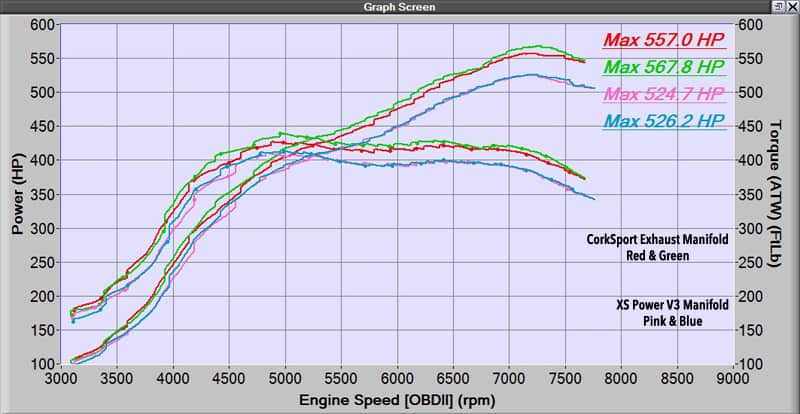
At the limit of the CST6 is a full bore 38psi, port-injected E85, and revving out to 8000RPM, resulting in 684.7WHP and 552WTQ. Check out the graph below. There may even be a little more to be had, with a larger 4” intake and 3.5” downpipe and exhaust.
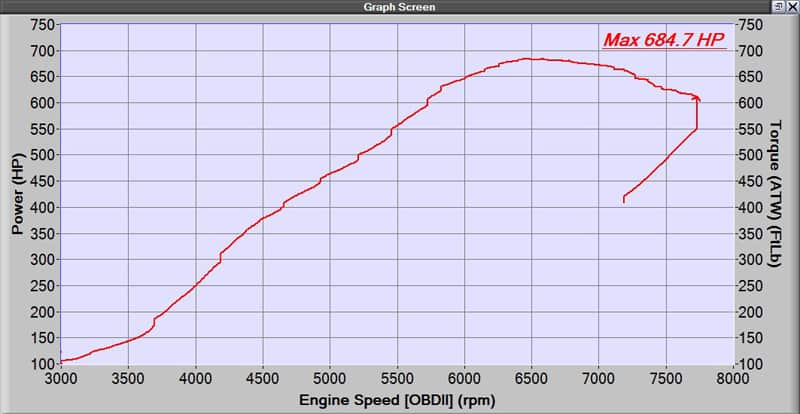
Like every other CorkSport turbo, the CST6 comes with all new hardware, gaskets, and the needed oil and coolant lines to make your install as painless as possible. The CST6 is a little special though as it also comes with a v-band clamp and EWG elbow to help with the installation of your EWG actuator. While you will have to supply the EWG actuator itself, the elbow helps locate the Tial 44mm (or equivalent) wastegate in a usable location, whether you have an MS3 or MS6. In addition, we have a dump tube available for purchase to prevent any fabrication on your CST6 install.
So if you’re in the market for some serious horsepower on your speed, be sure to check out the CorkSport CST6. Let us know if you have any questions on the CST6, installation, or supporting mods, we’re happy to help!
P.S. If you buy a CST6 share your power graph with #CorkSport


